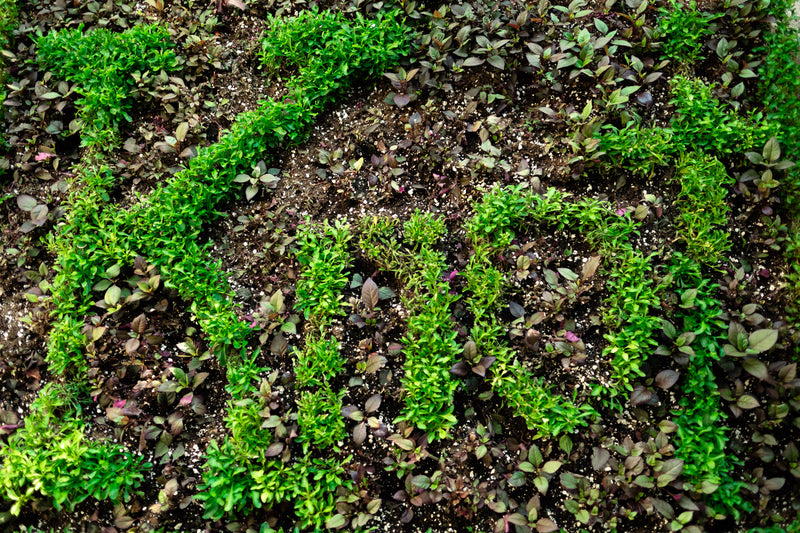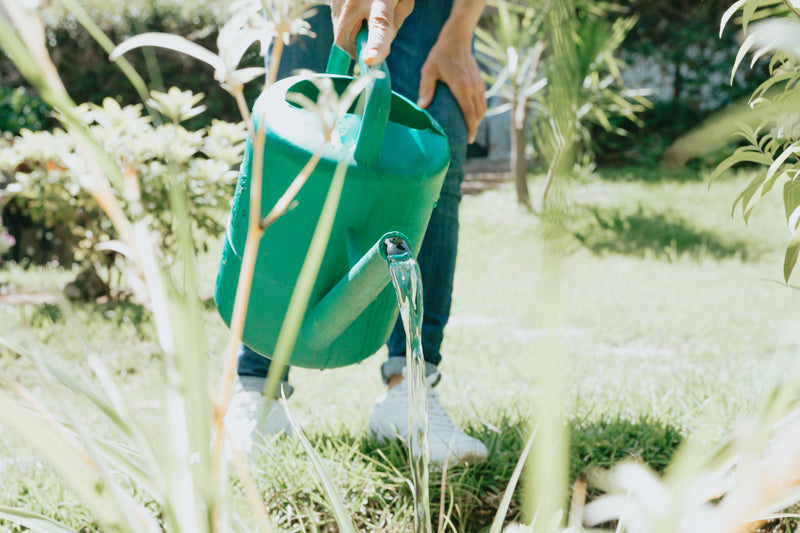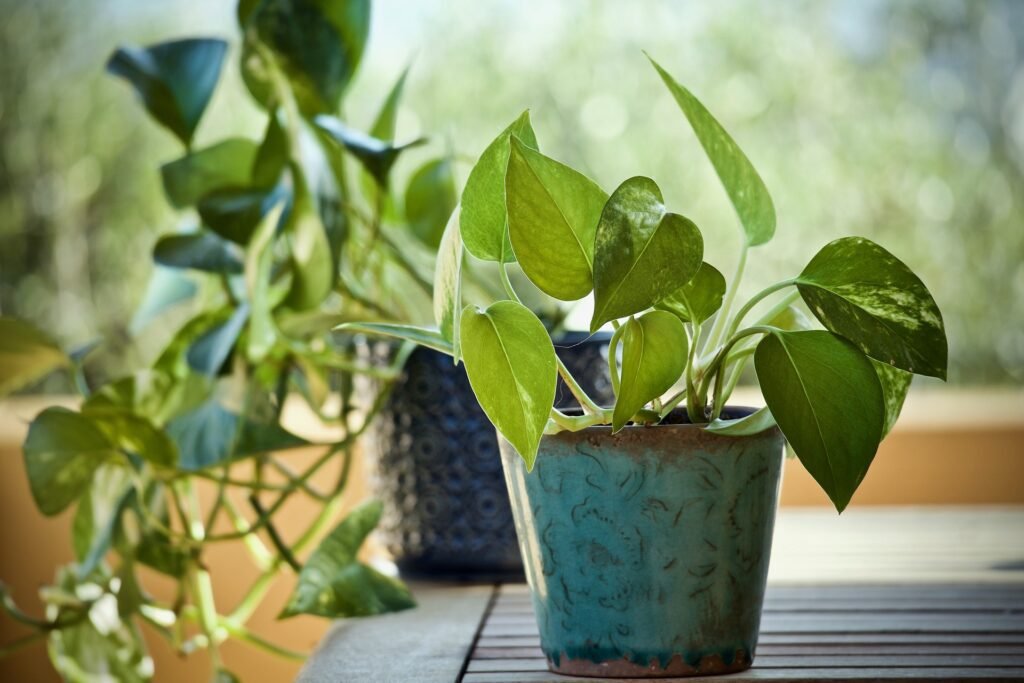If you are a plant enthusiast, you know how it feels to see your beloved plants suddenly showing signs of distress. One such problem that can make any gardener worry is when the leaves of their pothos plant start curling up. It can be frustrating to see your once lush and thriving plant struggling to survive. While there could be several reasons behind this mysterious phenomenon, understanding the root cause is crucial for nursing your pothos plant back to health. In this blog post, we will unravel the mystery behind why pothos leaves curl up and suggest some effective solutions to help your plant thrive again. So, let’s dive in!

Introduction to Pothos Plants: A Brief Overview
Pothos plants are a popular choice for indoor gardening enthusiasts due to their low maintenance and attractive appearance. These plants, also known as devil’s ivy, are native to the Solomon Islands and have become a staple in many households around the world. Pothos plants are characterized by their heart-shaped leaves and trailing vines that can grow up to 10 feet long. They thrive in bright, indirect light and can tolerate a wide range of temperatures. However, despite their resilience, pothos plants can experience issues such as curling leaves, which can be a cause for concern among plant owners. In this article, we will explore the common factors that contribute to pothos leaves curling and how to address them for a healthy and vibrant pothos garden.
Causes of Pothos Leaves Curling: Common Factors that Contribute
Pothos plants are relatively low-maintenance and can thrive in a variety of conditions, but if you notice your pothos leaves curling up, it could be an indication that something is off. There are several common factors that contribute to this issue. One possible cause is improper watering habits, which can lead to both overwatering and underwatering. Another factor could be the environment your plant is in, such as humidity levels and temperature. Pests infestations are also known culprits for curling leaves on pothos plants – two commonly found pests on these plants include spider mites and mealybugs. Identifying nutrient deficiencies through yellow or brown spots on the leaves and balancing fertilizer use can help alleviate this problem too. In the next sections we will delve deeper into these issues so that you have all the information you need to keep your pothos garden healthy!
Underwatered or Overwatered? How Watering Habits Affect Your Pothos Plant
Watering habits play a crucial role in the health of your Pothos plant. Overwatering or underwatering can cause leaf curling and other signs of stress. When there is too much water, the roots become waterlogged, leading to root rot that ultimately affects the entire plant. On the other hand, when you don’t give enough water, it causes dehydration and makes leaves prone to wilting and curling up.
To avoid these issues, water your Pothos plant regularly, but only when the top inch of soil feels dry to touch. Avoid watering on a schedule because this practice doesn’t always take into consideration factors such as humidity levels or temperature fluctuations that can affect how quickly plants absorb moisture from their environment.
Another essential thing to remember is not to let your Pothos sit in standing water for extended periods since they prefer well-draining soils that allow excess moisture to escape easily.
Humidity Levels and Temperature: Understanding the Ideal Environment for Your Pothos Plant
Humidity levels and temperature are crucial factors in maintaining a healthy pothos plant. Pothos plants thrive in environments with high humidity levels, ideally between 40-60%. If the air is too dry, the leaves may start to curl up and turn brown. You can increase humidity levels by placing a tray of water near the plant or using a humidifier. On the other hand, if the temperature is too low, your pothos plant may suffer from stunted growth and yellowing leaves. The ideal temperature range for pothos plants is between 65-85°F (18-29°C). Keep your pothos away from drafty windows or doors and avoid placing it near heating or cooling vents. By maintaining the right humidity levels and temperature, you can ensure that your pothos plant stays healthy and vibrant.
Pest Infestations: Identifying and Treating Common Insects on Your Pothos Plant
Spider mites and mealybugs are the most common pests that can infest your pothos plant. Spider mites are tiny, red or brown insects that can be identified by the fine webbing they leave behind. Mealybugs, on the other hand, are white, cotton-like insects that cluster around the base of leaves and stems.
To treat spider mites, isolate the affected plant and wash it with a gentle soap solution. You can also use insecticidal soap or neem oil to get rid of these pests. For mealybugs, remove them manually with a cotton swab dipped in rubbing alcohol. You can also use insecticidal soap or neem oil to control their population.
Prevention is key when it comes to pest infestations. Keep your pothos plant healthy by providing it with proper care and maintenance. Regularly inspect your plants for any signs of infestation and take action immediately to prevent further damage.
Nutrient Deficiencies and Excesses: Balancing Fertilizer Use for Healthy Growth
Nutrient Deficiencies and Excesses: Balancing Fertilizer Use for Healthy Growth
Fertilizer use is essential to ensure that your Pothos plant receives the necessary nutrients for healthy growth. However, over-fertilization can lead to nutrient excesses, causing the leaves to curl and turn yellow. On the other hand, nutrient deficiencies can also cause curling leaves.
To avoid these issues, it’s important to use a balanced fertilizer with equal amounts of nitrogen, phosphorus, and potassium. Nitrogen deficiency is common in Pothos plants and can be identified by yellowing leaves. In this case, a nitrogen-rich fertilizer can help.
On the other hand, potassium deficiency can cause brown spots on the leaves and can be treated with a potassium-rich fertilizer. Remember not to over-fertilize your plant as it can lead to root burn and other issues.
Regularly check your Pothos plant for signs of nutrient deficiencies or excesses and adjust your fertilization schedule accordingly. With proper care and attention, your Pothos plant will thrive and remain healthy for years to come.

Will Indoor Flowers Help Prevent Pothos Leaves from Curling?
Yes, indoor flower tips for beginners can help prevent Pothos leaves from curling. Proper care, including adequate lighting, watering, and humidity, can ensure healthy growth. Incorporating indoor flowers in the same environment as Pothos plants can also contribute to creating optimal conditions for preventing leaf curling.
Pruning Techniques: Enhancing the Appearance and Well-being of Your Pothos Plant
Regular pruning is essential for maintaining a healthy and attractive pothos plant. It helps to remove dead or damaged leaves, promote new growth, and prevent the plant from becoming too leggy. To prune your pothos, start by identifying the stems that need to be trimmed. Use a clean pair of scissors or pruning shears to make a clean cut just above a leaf node. This will encourage new growth to emerge from the node and keep the plant looking full and bushy.
You can also use pruning to shape your pothos into a specific form or size. To do this, simply trim back any stems that are growing in unwanted directions or that are too long. Be sure to make cuts at an angle to prevent water from pooling on the cut surface.
Remember to always sterilize your pruning tools before and after use to prevent the spread of disease. With proper pruning techniques, your pothos plant will thrive and continue to bring beauty into your home or garden.

Conclusion: Maintaining a Vibrant, Thriving Pothos Garden
Maintaining a healthy pothos plant requires attention and care. Regular monitoring of its watering habits, temperature, humidity levels, pest infestations, and nutrient balance is necessary to ensure optimal growth. Keep in mind that correcting any issues with your pothos plants may take time and patience; but it’s well worth the effort when you see new leaves sprouting out.
In addition to keeping an eye on these factors, pruning your pothos plant regularly can also boost its overall appearance and health. Look for areas where there are dead or yellowing leaves as this could be a sign of overwatering or underwatering. Using sterilized pruning shears or scissors, carefully cut away these damaged sections so that the remaining foliage can thrive.
With proper maintenance techniques such as these in place, along with some love and attention from you (the plant parent), there’s no reason why your pothos garden won’t flourish into beautiful greenery!
In conclusion, pothos plants are a beautiful addition to any garden or indoor space. However, they require proper care and attention to thrive. Curling leaves can be a sign of various issues such as overwatering, underwatering, pests, or nutrient imbalances. By understanding the common causes of pothos leaves curling and implementing the appropriate solutions, you can ensure that your plant remains healthy and vibrant. Remember to maintain the ideal environment for your pothos plant by regulating humidity levels and temperature, providing adequate water and nutrients, and regularly pruning to promote healthy growth. With these tips in mind, you can enjoy a flourishing pothos garden for years to come.
FAQ
What are some possible reasons for pothos leaves curling?
Overwatering, underwatering, pests, disease, or low humidity.
How can I fix my pothos leaves curling?
Identify the issue and adjust watering, increase humidity, treat pests or disease.
Who do I contact if I suspect a pest or disease issue?
Contact a local plant nursery or agricultural extension office for guidance.
What can happen if I ignore pothos leaves curling?
The plant’s health can decline, leaves may yellow, and growth may slow.
How can I prevent pothos leaves from curling in the future?
Maintain proper watering habits, keep humidity levels stable, and inspect for pests regularly.

